Father Baker’s Shining Example
Congratulations to one of our cherished neighbors here in the Catholic community of New York State, the Diocese of Buffalo!
You may have heard the good news that, last month, Pope Benedict XVI declared a priest of that diocese, Father Nelson Baker, “venerable,” meaning the process of his cause for canonization as a saint is now official.
Like you, I look forward to the day Father Baker is “beatified,” with approval of the Holy Father, so we lovingly call him, “Blessed Nelson Baker,” and then, if I live long enough, to revere him as “Saint Nelson Baker” when, please God, he is canonized.
Seems to me we very much need his example, and heavenly intercession, right now. Let me mention three specific areas where Venerable Nelson Baker can illuminate us today: charity, prayer, and priesthood.
In Buffalo, they called him “America’s St. Vincent de Paul,” or “the Don Bosco of the United States,” or simply, “the Padre of the Poor,” all because of his indefatigable charity for the neglected and marginalized of society.
He himself was from a hardscrabble background. Born in Buffalo in 1842, his dad was a grocer (and a Protestant), his mom (Irish and Catholic) worked hard as well not only in the home but in the store, where Nelson labored, too, and saw his father more than once sacrifice profits to extend credit to hungry families.
After hard service in the New York Infantry during the brutal Civil War, young Nelson, too, opened a feed and grain business. Although it flourished, he felt something missing in his life, and gradually discerned a vocation to serve Jesus and His Church as a priest. Selling his half of the business, he entered the seminary, and was ordained a priest for the Diocese of Buffalo in 1876.
His first—and, as it turned out, only assignment—was to St. Patrick’s parish in what is now known as Lackawanna, outside of the city. Yes, there was a church, but the parish administered as well an orphanage for abandoned boys who were, let’s just say, welcome nowhere else.
This so-called “protectory” was jammed, but also nearly $60,000 in debt, and ready to close. Young Father Baker used all of his own money from the sale of his portion of the grain business to keep it up and running. Realizing that was not enough, he became one of our first organized “development directors.” Figuring correctly that women would especially be sensitive to his work with forgotten children, he wrote hundreds of them across the country, inviting them to join “The Association of Our Lady of Victory” for two bits a year. It took off.
By 1900, the now famed child care center tended to over 600 troubled kids, renowned for its holistic approach—education of soul, mind, and body—guided by this gentle, tender presence.
Like other apostles of charity, Father Baker had a built-in radar for the further needs of God’s people in need. “Great,” he thought, “we’re doing fine with the kids, but, once they leave us at 15 or so, they go back to their old street gangs or return to violent, abusive homes.”
So, he opened a “working boys home” to provide a wholesome environment and continuing education for those teenagers and young adults.
And, asked Father Baker, why wait until the kids are already threatened to care for them? So, let’s open an outreach program for single moms, women with a difficult pregnancy, with pre-natal and infant care.
When Venerable Nelson Baker ended up with dozens of sick and dying coming for help, he opened a hospital as well, so that he now became the “mayor” of what the country was calling a “city of charity.”
The “citizens” of this famed “city” numbered in the thousands when the Great Depression arrived in 1929. For a decade, hungry, sick and homeless people, with nowhere else to go, found a smile, welcome, and embrace from Father Baker. Local officials figured his mission fed over a million people, clothed half a million, and cared for a quarter-million sick in the 1930’s.
Yet, he was the first to say that his heroic charity flowed from and depended upon a faith expressed in prayer. He unfailingly prayed to Jesus through Mary, especially under her title of Our Lady of Victory, and was never let down.
To thank Jesus and Mary, in 1921 he invited his benefactors to build a new church in her honor. When Pope Pius XI designated this splendid structure a basilica in 1926, it was completely paid for, and had become what Father Baker called “the city hall” of his famed “city of charity.” What was most important for him, Father Baker preached, was not only that he fed people in the soup line, but daily gave them the “bread of life” in the great prayer of the Mass.
And, finally, all this was done by a simple, parish priest, known for his honor, hard work, virtue, and heart like that of Christ himself. As we see priests today the butt of jokes, caricatured as perverts and abusers, a priest like Father Nelson Baker powerfully reminds us of the lustre of the vast majority of the Church’s faithful, upright parish priests, who battle on with charity and prayer, with the immense trust of God’s People, confident in the might of Jesus and mantle of Mary.
We in New York State already have the North American Martyrs, Blessed Kateri, St. Elizabeth Ann Seton and Mother Frances Cabrini; New York hopes to add to the litany of the saints radiant lights such as Pierre Toussaint, Felix Varela, Archbishop Sheen, Dorothy Day, Father Capodanno, and Cardinal Cooke. And now we’re inspired by the charity, prayer, and priesthood of another New Yorker, Venerable Nelson Baker.
